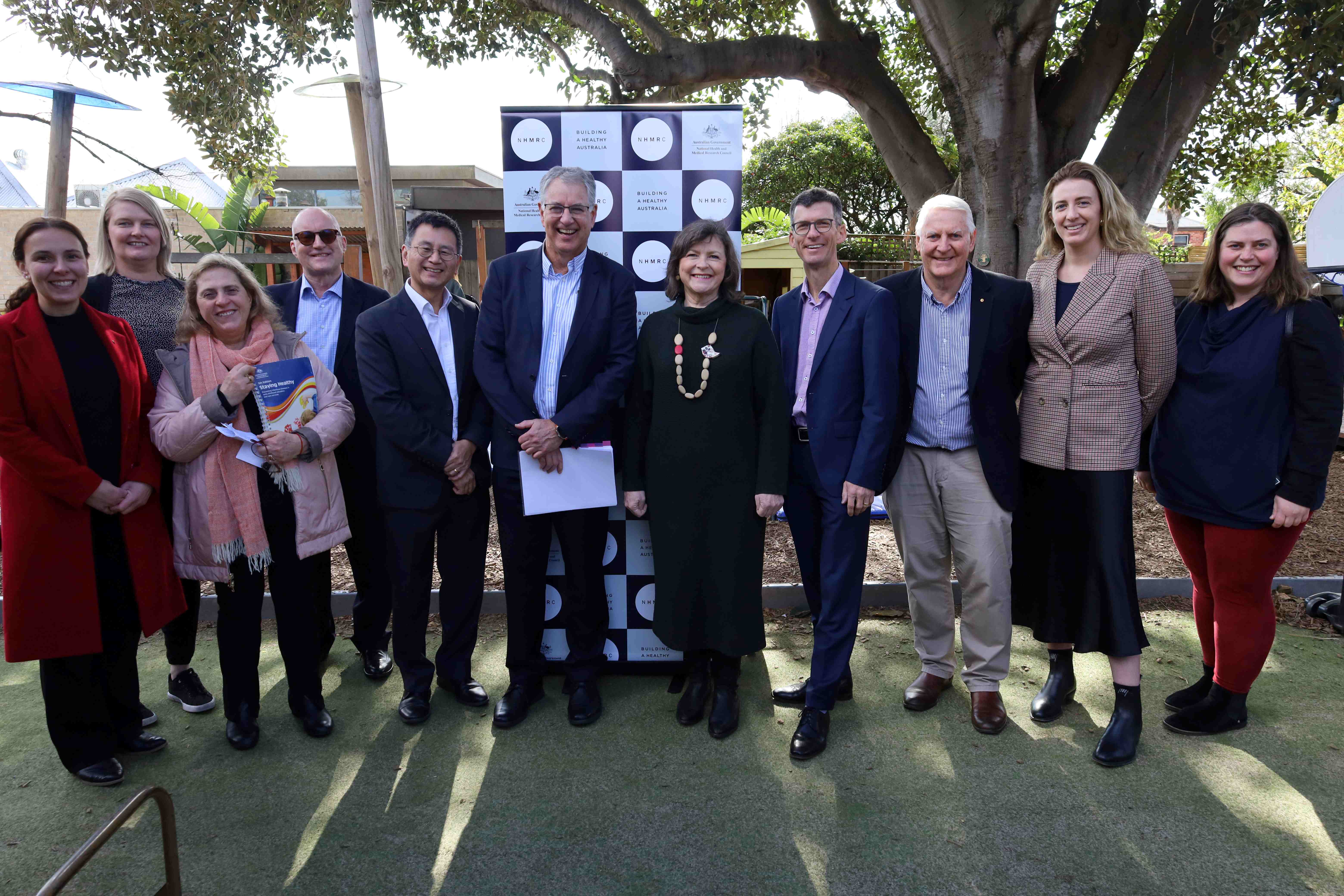Search
Research
PCV10 elicits Protein D IgG responses in Papua New Guinean children but has no impact on NTHi carriage in the first two years of lifeNasopharyngeal colonisation with nontypeable Haemophilus influenzae (NTHi) is associated with development of infections including pneumonia and otitis media. The 10-valent pneumococcal conjugate vaccine (PCV10) uses NTHi Protein D (PD) as a carrier. Papua New Guinean children have exceptionally early and dense NTHi carriage, and high rates of NTHi-associated disease.
Research
Interrupted time-series analysis showed unintended consequences of non-pharmaceutical interventions on paediatric hospital admissionsCOVID-19-associated non-pharmaceutical interventions (NPI) have disrupted respiratory viral transmission. We quantified the changes in paediatric hospital admissions in 2020 from five different NPI phases in Western Australia for acute lower respiratory infections (ALRI) in children in the context of all-cause admissions.
Research
Converting the maybes: Crucial for a successful COVID-19 vaccination strategyBroad community acceptance of a COVID-19 vaccination will be critical for effectively halting the spread of the virus. In this study, we focus on factors that differentiate those who are undecided from those who are either willing or unwilling to accept a prospective COVID-19 vaccine. An online survey in May 2020 assessed Australian adults' willingness to receive a COVID-19 vaccine (yes, maybe, no). A multinomial logistical regression of responses (N = 1,313) was used to identify correlates of vaccine willingness between the three groups.
Research
Clinical and Molecular Epidemiology of an Emerging Panton-Valentine Leukocidin-Positive ST5 Methicillin-Resistant Staphylococcus aureus Clone in Northern AustraliaRecently, we identified a Staphylococcus aureus sequence type 5 (ST5) clone in northern Australia with discrepant trimethoprim-sulfamethoxazole (SXT) susceptibility results. We aimed to identify isolates of this clone using Vitek 2 SXT resistance as a proxy and to compare its epidemiology with those of other circulating S. aureus strains. We collated Vitek 2 susceptibility data for S. aureus isolates collected through our laboratory and conducted a prospective, case-control study comparing clinical, microbiological, epidemiological, and genomic data for subsets of isolates reported as SXT resistant (cases) and SXT susceptible (controls) by Vitek 2.
Research
Spatiotemporal patterns of tuberculosis in Hunan province, ChinaTuberculosis (TB) is the leading cause of death from a bacterial pathogen worldwide. China has the third highest TB burden in the world, with a high reported burden in Hunan Province (amongst others). This study aimed to investigate the spatial distribution of TB and identify socioeconomic, demographic, and environmental drivers in Hunan Province, China. Numbers of reported cases of TB were obtained from the Tuberculosis Control Institute of Hunan Province, China.
Research
Improving Influenza Vaccination in Children With Comorbidities: A Systematic ReviewChildren with medical comorbidities are at greater risk for severe influenza and poorer clinical outcomes. Despite recommendations and funding, influenza vaccine coverage remains inadequate in these children. We aimed to systematically review literature assessing interventions targeting influenza vaccine coverage in children with comorbidities and assess the impact on influenza vaccine coverage.
Research
Revaccination outcomes of children with vaccine proximate seizuresSeizures, whether febrile or afebrile, occurring within 14 days following vaccination can be considered as vaccine proximate seizures (VPSs). While the attributable risk and clinical severity of first febrile VPS is well known, the risk and clinical outcomes of VPS recurrence is less well defined. We conducted a retrospective review of revaccination management and outcomes in children who experienced a VPS as their first seizure seen in Australian Specialist Immunisation Clinics between 2013 and 2017. Vaccination outcomes were compared between children who had a VPS as their only seizure (VPS only) and children who had further non-vaccine proximate seizures following their initial VPS (VPS+) prior to review at the clinic.

News & Events
Latest infectious disease guidelines aim to keep childcare ‘bug-free’The National Health and Medical Research Council (NHMRC) has launched their sixth edition of Staying healthy: Preventing infectious diseases in early childhood education and care services in a bid to tackle the transmission of germs amongst young kids.
Contact us If you'd like to get in touch, please contact us by phone or email. Phone: 0400 450 240 Email: vtg@thekids.org.au PAEDS Paediatric Active

News & Events
Why should all primary school aged kids get a free flu vaccine this winter?With COVID-19 being a major issue this year, is it still important to have a flu vaccine? And why have school aged children been included for a free vaccine?
